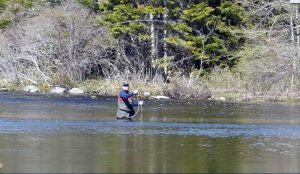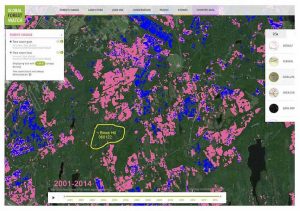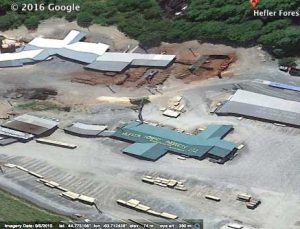“Over the past year, Forest Nova Scotia worked with Gardner Pinfold Consultants to conduct an analysis of the economic impact of the Nova Scotia Forest Industry. The results, finalized in December of 2016 were released at Forest Nova Scotia’s AGM on January 25th, 2017.” View Forest NS links to Report.
From the Intro: “This study aims to inform policy-makers and the public about the contribution of the forest industry to the Nova Scotia and Canadian economies. In addition, a competitive gap analysis will be presented to illustrate the industry’s position relative to competing jurisdictions.”
The report, in the form of a set of graphic slides, contains some stats I hadn’t seen elsewhere, e.g. a figure showing percent wood harvest by county – Cumberland Co had the highest value (15%) with Halifax second (11%). Halifax Co’s position surprised me. Perhaps it shouldn’t have – some pretty intensive clearcutting goes on away from habitations. (It would also be a surprise to the O2 Planning + Design rep I heard a year or so ago in a presentation on Halifax’s developing Green Network; he commented that Halifax forests are great ecological and social asset but aren’t worth much otherwise, saying “I should know, I’m a forester”. Such reactions to NS forests by visitors are not uncommon.) Another slide shows the distribution by county of our 93 sawmills, 2 pulp and paper mills and 2 energy-generating facilities.
The total monetary output from forestry in 2015 was $2.1 billion ($923 M of it in as spinoff), an increase from $1.5 b in 2012; 6100 direct jobs were generated and 5400 indirect jobs.In terms of employment, a highlight from my perspctive is the wood product manufacturing industry which maintained over 2000 jobs through 2012, 2013 and 2014 (pulp and paper half or less of that number). Softwood lumber accounted for 81% of the total harvested 2012-2015; hardwood sales increased more (23%) than softwood sales over the same period (6%). I am guessing that in addition to creating more jobs overall, lumber retains more dollars within Nova Scotia than pulp and paper per unit of monetary gain.

Fishing Hunting and Trapping ranked #1 among 28 Goods-Producing Sectors in terms of contributions to GDP.
The Industry Stats slide doesn’t give the Forestry Goods as a percentage of total Goods-Producing Sectors; stats available previously on the Forest NS website cited a September 2013 study by Atlantic Provinces Economic Council stating that Nova Scotia’s forestry industry accounted for 1.8% of Nova Scotia’s GDP and 2.2% of provincial employment, including indirect effects on other industries, so I guess it is still in the same ballpark.
Two further slides emphasize the ranking of forestry as one category amongst 17 for NS Goods-Producing Sectors in terms of employment (forestry ranks #2) and as one category amongst 15 for Goods-Producing Sectors in terms of exports (forestry ranks # 3), but figures for % of totals are not given. It’s not clear whether the categories compared with the forestry category were created by the consultants or are standard categories (it could make a difference in the rankings).
As well as the percentages of totals lacking among the Industry Stats (I suspect because they don’t sound as impressive as the rankings), there are no figures for the dollar support of forestry, direct and indirect, by government. There are no analyses or highlighting of challenges or weak spots; perhaps some of that was in the “competitive gap analysis” referred to in the introductory slide, but not included in the public report.
In short, I see the Report, at least the version released to the public, as a PR document; it does not provide a critical economic analysis.
————–
It is good news that job numbers overall are being maintained, especially in lumber, also that Fishing Hunting and Trapping are significant generators of goods and employment. Good news because Lumber, and Fishing Hunting and Trapping benefit from healthy, mixed, multi-aged forests that we would like to see more of.
Lumber and pulp and paper are strongly linked economically in the forest industry as it has evolved since the 1950s. Now, industry/government search for alternative markets to pulp and paper for low value wood to keep it all afloat, while intensive clearcutting continues to degrade our forests and aquatic systems and undermines the longer term viability of forests and forestry in Nova Scotia.
Other linkages need to be recognized and built upon, such as the linkage of high quality lumber to mixed older age forests, and the benefits of those forests for Fishing Hunting and Trapping, ecosystem services, climatic change mitigation… and more. New models of a healthy forest industry are possible.


